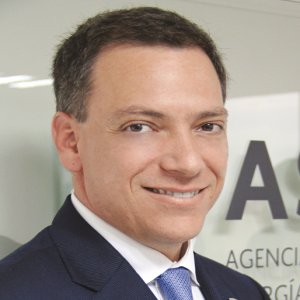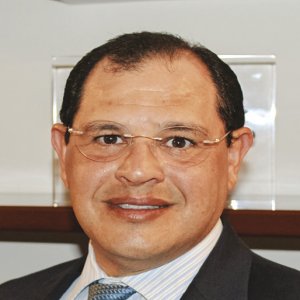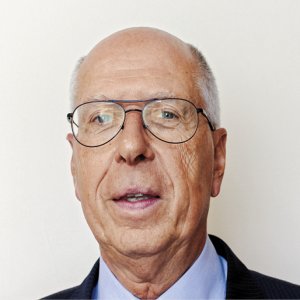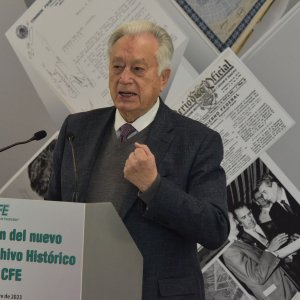New Robust System to Boost Competitiveness

STORY INLINE POST
Q: Which of the major events of 2016 will shape the future of CFE?
A: The Energy Reform’s approval in 2013 ignited one of the biggest transformations the Mexican energy industry has experienced in decades, particularly in the electricity sector because it created open markets for electricity generation and commercialization. The Wholesale Electricity Market (MEM) was created with the fundamental principle of dispatching the cheapest energy first, which will benefit the pockets of Mexican families. This market mechanism also works as an incentive for power producers to optimize their production costs, an area CFE has been focusing on.
CFE’s restructuring process was another highlight of the year. In January 2017 our subsidiaries and affiliates started working independently, adding another milestone to the company’s new phase. We now have 13 companies under one roof, which we need to continue consolidating financially in the coming months while respecting the strict legal separation principles. CFE’s new organization includes six generation companies competing against each other as well as other private producers, one transmission subsidiary working at the national level to ensure the system’s security and one distribution subsidiary with 16 independent business units. We also have a subsidiary to serve the basic segment, CFE Básico, and an affiliated company for qualified users, CFE Calificados. The company has two new units to commercialize hydrocarbon fuels in Mexico and the US, an interesting opportunity also made possible by the Reform. By entering the natural gas commercialization business, we expect to reduce our generation costs considerably as 80 percent of these are fuel-related. To increase our competitiveness, we have committed to the development of 85 strategic projects, totaling over US$25 billion in investments. These projects include new power generation facilities, transmission and distribution assets as well as natural gas pipelines. We have 26 projects related to natural gas transportation that will contribute to the government’s goal of expanding the National Pipeline System by 75 percent in 2018. Having a more robust system will not only benefit CFE as a large natural gas consumer but also other Mexican industries.
Q: What are the main challenges faced by CFE’s new companies?
A: Transmission and distribution will become core businesses for CFE in the short term and both will remain under regulated tariffs. Among the major challenges in these areas is to continue pushing the modernization and expansion of the grid, using the tools introduced by the Reform to boost revenue. Another challenge we are facing in the transmission and distribution sectors is the need to reduce our technical and non-technical losses. CFE lost 16 percent of the energy it produced due to these causes in 2012 but we managed to reduce that to 12 percent in the last period measured. Our goal is to further lower our losses to 10-11 percent by 2018, a reachable objective given our past achievements. In the case of CFE Calificados, which mainly serves industrial users, we face the challenge of upcoming competition, which is driving us to reshape our approach to the sector. Regarding our generation subsidiaries, the main challenge is to attract private capital to push for the development of new power plants.
Q: What actions is CFE taking to change its employees’ mindset to meet the needs of a productive enterprise?
A: Creating this new operational structure has been a long and complex process but CFE’s employees and their union (SUTERM) have risen to the challenge. We could not have accomplished the successful separation of CFE without the active participation of our employees. I paid over 20 visits to our facilities where I have witnessed firsthand the enthusiasm and commitment of our team members. CFE’s employees are its main asset. We serve a portfolio of over 40 million clients, generating annual sales of MX$300 billion (US$14.5 billion). This is only possible thanks to our 100,000 employees, who are highly experienced professionals committed to the development of the Mexican energy industry. Different generations of CFE’s employees made it possible for 98.5 percent of the Mexican population to have access to electricity. I have no doubts about my team’s capabilities and commitment to implement the changes brought by the Reform and to safely bring CFE to the next stage of its existence. But it is true that we need to change the company’s culture. CFE used to act as an authority to a certain degree and we need to understand that now, in some segments, we are just another competitor. We need to reshape our strategy to better serve the needs of our clients, understanding their concerns and offering more attractive services and tariffs.
Q: How has CFE’s relationship with the private sector changed since the Energy Reform?
A: CFE was the main promoter of large energy infrastructure projects in the past, many of which were developed in collaboration with private companies. The Energy Reform has changed the context for CFE’s collaboration with the private sector, allowing us to establish alliances and share each of the projects’ risks and benefits. The guidelines for CFE’s legal restructuring were among the fundamental elements of the Reform. We expect the industry to remain vigilant about compliance with these, ensuring CFE passes through this transformation without losing its competitiveness but allowing the establishment of a level playing field for other participants. In this context CFE is fully prepared and willing to continue collaborating with the private sector in the development of a robust and competitive electricity market. It is important to highlight that Mexico’s Energy Reform is taking place amid a rising demand scenario as the country’s electricity demand is growing at around 3 percent annually. This feature makes Mexico a distinctive case and ensures there is enough room for CFE but also for new participants to capitalize on this market.
Q: What is the future of CFE’s energy mix?
A: Mexico has established the goal of producing 35 percent of its electricity from clean energy sources by 2024 and CFE is moving at the right pace to reach this target on time. The system’s stability is another key factor for us so we are also investing heavily in baseload technologies. In this area, CFE is pursuing an ambitious strategy to substitute expensive and polluting fuels for more sustainable alternatives. Between 2012 and 2015 we reduced our fuel oil and coal usage significantly, decreasing our GHG emissions by 50 percent. Using natural gas for power generation represents around 25 percent of the cost of using fuel oil, so we have also reduced our generation costs considerably. Our end goal is to have a diversified portfolio of technologies and fuels so we can react quickly to sudden changes in the international market or technological changes with the potential of disrupting the industry.

























